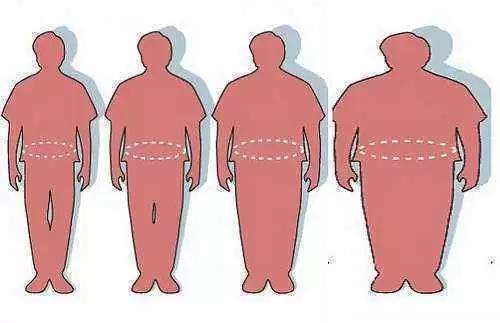
Celiac.com 09/18/2020 - Did you know that certain foods may be seriously compromising your general health? If you are interested in eating a cleaner diet in order to effortlessly maintain your ideal weight, to boost your immune system, and to improve your overall health consider a step-wise approach. Switching abruptly from eating a mainstream diet, rich with baked goods, processed foods, milk, cheese, yogurt, meats and alcoholic beverages to a cleaner, healing diet comprised of whole (gluten-free) grains, beans, nuts, vegetables and fruits can be a shock to the system. It can also rock your world because you have to re-think virtually everything consumed. There is a better way. Rather than doing an about-face overnight try doing this incrementally, incorporating one change at a time, over a period of time. Let your body get used to the changes gradually. Observe how you feel when you make small changes and decide whether further changes may help you feel and function even better. Your body needs to learn how to process and eliminate new foods. Seventy percent of your immune system is located in and around your intestines according to gastroenterologists. Intestines respond best to slow, incremental changes. This article assumes that you must follow a gluten-free diet, so ‘going gluten free’ is the first step.
This approach suggests eliminating all refined and processed foods next. Dr. Christine Northrop (author of Women’s Bodies, Women’s Wisdom: Creating Physical and Emotional Healing) states that as we get older, we should eat fewer grains. According to Dr. Ron Hoggan (author of Get the Iron Edge) approximately 30% of the US population (90 million people) are genetically predisposed to gluten sensitivity which poses a serious health threat. Thirty million of those show identifiable immune reactions to gluten. Gluten intolerance is the fastest growing diagnosis in America. That shouldn’t be too surprising. Humans didn’t evolve eating gluten. Gluten can only be traced back 10,000 years and considering that homo-sapiens can be traced back 400,000 to 1 million years, depending on the paleontologist, 10,000 years isn’t very long in this scheme of things.
Celiac.com Sponsor (A12):
After a few months, eliminate dairy products. Notice how you feel when you eliminate both refined foods and dairy products from your diet. Since gluten and dairy intolerance manifests systemically in the body in many ways (not just as digestive problems), a lot of chronic ailments may go by the wayside when eliminating gluten and dairy. You may notice that you have more energy and that your clothes are looser.
Finally, if you still feel there is room for improvement, eliminate or reduce your intake of various sugars. The following will suggest a year of cleansing with the ultimate goal of a fully functioning, energetic, healthy body. In one year, you’ll have a new body, and a totally different outlook on your health. Throughout this year, you’ll develop new habits that will help you thrive.
Step 1: Going Gluten-Free (Months 1-3)
Eliminating gluten, can be a little challenging at first, especially if you are accustomed to eating out. Restaurants are starting to cater to this growing demand, and in time, gluten-free menus in restaurants that understand how to avoid cross-contamination will be commonplace. For now, the best thing to do when eliminating gluten is to plan to eat at home for a while until you understand the diet. Grains that contain gluten are: Barley, Rye, Oats*, Wheat and Spelt. (Remember the acronym BROWS.) There are many other names for these commonly known grains such as bulgar, kamut, semolina, faro, einkorn, triticale, farina, fu, fe, durum, malt (and so on), so reading labels is mandatory. The list of gluten-free products on the market grows every day, and most health-food stores will give you a list of gluten free foods they sell.
In the beginning, eat brown rice, potatoes and corn. You may not feel any different until you have completely eliminated gluten from your diet for at least three months. You may also go through withdrawal or have intense cravings, but those are manageable. For instance, if you crave brownies, give yourself a treat while you adjust and make the Alternative Cook’s Brownies. For snacks, eat corn chips and salsa, popcorn or nuts. Tinkyada makes excellent pasta from brown rice. It cooks just like its wheat counterparts and has a good taste and texture. *Gluten-free oats are available in the health food store.
Why would anyone go gluten free if they do not have Celiac Disease? Gluten intolerance manifests in the body in over 40 ways. Symptoms of gluten intolerance include: diarrhea and/or constipation, severe gas, bloating, abdominal pain, weight loss, weight gain, irritability, brain fog , fatigue, depression, joint pain, infertility, migraines, arthritis, headaches, sinus problems, osteoporosis, Crohn’s disease, severe itchy rash, chronic neck and back pain, diabetes, Lupus, bloating, sleeping disorders, and on and on. If you have chronic problems, your body is trying to tell you something. Most chronic problems can be mitigated or completely eliminated by altering your diet.
Before going gluten-free, consider getting a blood test to find out if your body is producing antibodies against gluten. The reason for this is to establish a bona fide medical record that you are intolerant to gluten. If you are ever institutionalized (such as in a hospital, or assisted living) where someone else is responsible for preparing your food, you will have a pre-established medical record indicating that you need to avoid gluten. Once you stop eating gluten, you’ll likely feel so much better that you will not want to go back to eating gluten for a gluten challenge. These challenges usually require several months of eating gluten to medically prove your sensitivity.
Step 2: Avoid Refined and Processed Foods (Months 4-6)
You may notice when reading the lists of ingredients on pre-packaged gluten-free foods, that they contain tapioca starch, arrowroot, cornstarch, sweet rice flour, potato starch and sugar. These foods are highly refined. Whole gluten-free grain and flour choices include: sorghum flour, corn, brown rice and brown rice flour, teff, nut meals, quinoa, amaranth, buckwheat and Montina. Bean flours such as garbanzo, navy bean, pinto bean, fava bean and gafava, which is a combination of garbanzo and fava bean flour, are also whole food choices.
Refined foods include, basically, anything white. White flour, white rice, white sugar, high fructose corn syrup, starches such as cornstarch, arrowroot, tapioca flour and potato starch. Substitute these foods with their unrefined counterparts. Look for the words “whole grain” on anything you buy. If that is too much of a change, mix half of the refined with half unrefined such as half brown and half white rice, and gradually increase the amount of unrefined. The taste of a whole grain is pleasing if it is cooked properly. Whole grains usually need to be soaked a few minutes before cooking, and cooked with a little more water. Gluten-free baked goods often contain starches and gums to compensate for the missing gluten. Seek recipes that minimize these refined ingredients. A good rule-of-thumb is a recipe that calls for less than 25% starch compared to the other flours, and only make the higher ‘starch-flour’ recipes for special occasions.
Highly refined sugars include white sugar and high fructose corn syrup. High fructose corn syrup has been correlated with obesity in America. Apparently it suppresses the “I’ve had enough to eat now” receptor in our brain, so we keep eating more and more when we should feel quite full. White sugar can be substituted with organic cane sugar or Sucanut. Both of these sugars are less refined and contain minerals. Natural, less refined sweeteners include maple syrup, maple sugar, honey and Agave nectar. Agave nectar is derived from the Agave cactus. It is low on the Glycemic Index and tastes great. Stevia and Xylotol are two natural sweeteners that are zero on the Glycemic Index. (Note: the Glycemic index ranks carbohydrates according to their effect on blood glucose levels. A zero on the index means it does not affect blood glucose level.)
Processed foods are those found on the interior rows of the grocery stores pre-packaged cookies, frozen foods, soups, snack foods, chips, and cereals. These foods often contain refined flours, preservatives, artificial flavorings, gluten, dairy and colorings and a host of chemicals unrecognizable as food. Foods with added natural and artificial flavors have flavor enhancers to boost the flavor of the food to encourage you to eat more of it. Avoid these foods. Rather, choose whole foods such as brown rice, corn, potatoes, beans, vegetables, lean organic meats, fish, fruits and nuts.
Refined foods have been correlated with obesity, diabetes, heart disease, cancer, PMS, hormonal imbalances, cravings, hypoglycemia, hypertension, depression and mood swings to name a few. Refined foods have been named as one of the reasons children are now facing so-called adult diseases.
Step 3: Dairy (Months 7-9)
Next, if you are feeling like the refined/processed-food elimination went well, try eliminating dairy products. So many people say, “I couldn’t live without dairy products”. Yet, according to the US Census, one in every four Americans is dairy intolerant. There are two culprits: lactose, which is a sugar found in dairy products, and; casein, a protein in dairy products. The lactose in dairy products could be causing you to have respiratory problems such as asthma, a runny nose, constantly clearing the throat and frequent colds, as well as digestive problems such as gas, bloating, diarrhea and/or constipation. On the other hand, casein protein in milk products may not be processed properly in your intestines which could cause you to form antibodies in your blood and can cause a host of digestive problems, migraines, arthritis, respiratory problems and itchy skin. This constant affront could weaken your immune system over time, and can eventually manifest in one or more of many body systems.
There are plenty of great-tasting dairy substitutes to make and buy. Take a moment to explore your local health food store and you might be surprised at what you find. Imagine Foods makes a product called Rice Dream, a non-dairy milk. (There has been some controversy over whether Rice Dream is completely gluten free as it is made with barley enzymes.) Milks and creams can easily be made from nuts. Other milk substitutes include soy, almond or potato milk. Silk makes a variety of tasty soy-yogurts and if you are feeling ambitious, you can also make yogurt at home from nuts or grains with a yogurt maker. Yes, you can make delicious yogurt, cream, milk and custards from nuts!! Follow Your Heart makes dairy-free cheeses (that melt, and taste great) in Cheddar, Mozzarella, Nacho and Jack. Non-dairy cream cheese, whipped toppings, creamers, sorbets, ice creams and sour creams are all available. Be careful when purchasing non-dairy items because some contain casein or caseinate. Most non-dairy items can be substituted one-for-one in recipes. Non-dairy cheese sauces can be made using nutritional yeast and tangy vinegars. No kidding! They taste great.
Step 4: Sugar (Months 10-12)
If you really want to get thin and stay thin without dieting, eliminate sugar from your diet. This is the secret to maintaining your ideal weight effortlessly. Sugar (sucrose, lactose, glucose, dextrose, honey, high fructose corn syrup, sorbitol, fructose, maltose, beet sugar, glycogen, malt syrup, malt barley, maltodextrin, mannitol, mono-saccharides, poly-saccharides, sorghum, galactose, cane sugar, date sugar, di-saccharide, brown sugar, maltitol, turbinado sugar) is in virtually every processed food. Aside from obesity and adult onset diabetes caused from eating sugar, people who have a history of taking steroids, hormones or antibiotics likely have an overgrowth of yeast somewhere in their body which flourishes on the sugar consumed. In fact, according to Rice University, 70% of the American population has an overgrowth of yeast (Candida Albicans). It may be causing chronic constipation, yeast infections, headaches, depression, gas, indigestion, muscle aches, acid reflux, acne, joint pain, allergies, food cravings, obesity and/or diarrhea, high triglycerides and of course diabetes.
To kill a yeast colony one needs to initially eliminate all types of sugar, natural or refined, including honey, agave, organic cane sugar, dried fruits, alcoholic beverages, juice, and fruit except some berries, lemons, limes and green apples as well as eliminating fungi (mushrooms), foods made from molds (any cheeses) and bakers yeast (the kind that makes bread rise). An anti-yeast drug such as Nystatin, or a natural yeast-killer such as garlic pills can also be taken for the first 8 weeks of the diet. This sounds extreme, but you are killing an overgrowth in your body that has had a lot of time to take hold, and that is constantly fed by any sugar you eat. While cleansing on this diet, eat beans, gluten-free grains, nuts, all vegetables, berries and green apples in the beginning. If you are a meat-eater, unprocessed meats may also be eaten during this phase. In time, you can add various fruits and occasional treats.
You may actually feel worse while on the Candida-killing diet. This is common. Your body is digesting the yeast which can result in temporary symptoms including fever, headaches, achy joints, diarrhea and/or constipation, lung cleansing, mucus and/or runny nose. These are your body’s ways of purging a poison. Resist the urge to run to the doctor and get a remedy to treat the symptoms, or worse, an antibiotic. This will curtail your healing. Just realize this is a cleansing process and after it is over, in a few weeks, you will emerge with a healthy, functioning body.
Aspartame is a controversial sweeter, said to have originally been developed as a weapon of mass destruction and is apparently correlated with neurological disorders, Fibromyalgia, Multiple Sclerosis, brain tumors and the inability to synthesize proteins. There are alternative sweeteners. Our bodies are predisposed to crave sweet foods. So, to satisfy your deprived sweet tooth, use stevia or xylotol sweeteners. Stevia is a sweetener from the leaf of a stevia plant. Use it to sweeten drinks, or as a sweetener in puddings or on cereal or on cooked grains. Xylotol is a crystallized sugar substitute and can be used in recipes calling for sugar. Chewing gum sweetened with xylotol can also satisfy a craving for something sweet. Both are available in the natural food store. The fruits that are allowed on this diet also satisfy the urge for sugar. In time, intense sugar cravings diminish.
Step 5: Celebrating a Healthy Body
Having a healthy body is something to celebrate! You can achieve anything in life if you have your health. It is all done incrementally over months or years—and builds on feeling better and better each time you delve deeper into the world of clean living. You’ll find improvement in your stamina, demeanor, general outlook and moods. Chronic complaints will dissipate. You’ll maintain your ideal body weight WITHOUT dieting. Think of it as a lifestyle—one that will help you live a healthier life.
Substitution Strategies:
- The key to success is to have a strategy. Decide what you will eat before you are hungry, and have those foods on hand.
- Go through your kitchen and throw away the foods you are excluding to avoid temptation.
- Rather than drinking soda sweetened with sugar or aspartame, try making a drink with 2 cups of sparkling water, 1 TBS lemon juice, 1 TBS Agave nectar or 1/16 tsp. of Stevia.
- Snacks: Baked corn chips with salsa, air-popped popcorn, berries, fruit, nuts, vegetables.
- Breakfast: Gluten-free whole grain cereals with Vanilla Rice Milk, rice pudding, polenta, corn grits or gluten-free oats, soy yogurt, eggs, potatoes, fruit, almonds.
- Lunch: Vegetable soup, rice tortilla, rice pasta salad, leafy salads with lots of vegetables.
- Dinner: Fish, rice, vegetable, bean burritos, pasta with cream sauces, tamales, lasagna, etc.
Live deliciously and remember there’s always an alternative!














Recommended Comments
There are no comments to display.
Create an account or sign in to comment
You need to be a member in order to leave a comment
Create an account
Sign up for a new account in our community. It's easy!
Register a new accountSign in
Already have an account? Sign in here.
Sign In Now